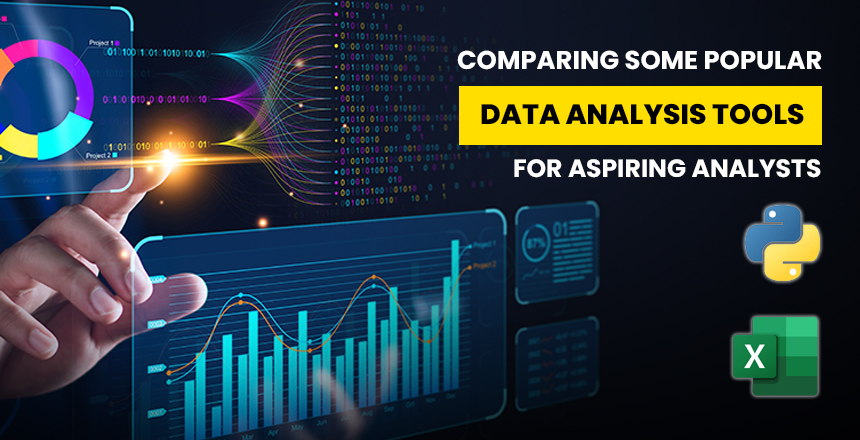If you are an aspiring data analyst, possessing some tools in your toolbox is very important for
conducting good analysis and getting good insights from data. Finding the options more
challenging as a newcomer makes it equally difficult to know which one would serve your
interest best. Read on to find out heads up on the best data analysis tools, which will help you
as a new analyst to determine which ones are worthy of your time and effort.
Excel
As one of the premiere examples of office software in use today, Excel is often the initial tool of
choice that anyone interested in becoming an analyst is likely to master. The benefits of Excel
include:
- It has an easy-to-navigate interface, hence it is easy to learn.
- versatile pre-installed calculations that allow to easily perform different calculations
- Free access and adjusting of data format and charting.
- Cookies and links, Cross-Platform and Cross-OS
- -Compatibility with small to medium-sized datasets
The main disadvantages are that Excel appears to be confining at times when it comes to
sorting through huge or intricate data, as well as not preparing one with as many tendentious
data science techniques for higher level analysis. However, it’s a great starting point if you want
to get a feel of how data manipulation works before moving up to more complex programs.
SQL
SQL (structured query language) is the global programming language deployed for managing
databases and querying data. SQL is a powerful tool that comes in handy as an analyst
because it assists in querying companies’ databases for information. Key advantages include:
- Provides faster ways of slicing, dicing, and querying very large sets of data.
- Universal and non-proprietary coding languages are portable over technologies.
- A structured approach follows the way the analyst thinks.
- Clearly, a specific demand skill set is in abundance when it comes to learning resources.
Complications may come up when working with big, unorganized data. However, for the
organized datasets, it puts SQL in the hands of analysts to be a very powerful tool for data
investigation.
R
R is an open source programming language designed specifically for statistical computation and
graphic display and, as such, is a perfect tool for drilling down for deeper analysis. Pros for
aspiring analysts are:
- Very dynamic to support data modeling while it can be easily customized for specific needs.
- Very large collection of open-source built-in packages for almost everything analytical.
- Strong for algorithm construction and machine learning if used in conjunction with other methods
- This is actually an essential skill set for data science job postings.
The disadvantages of this paradigm are a sharp increase in the complexity of data manipulation
for a program for beginners and the relative complexity for small analysis tasks. However, to
those who will go the extra mile doing more sophisticated analysis, all the features R provides
are worth it.
Python
Python is also an open-source language for general use, which makes it an ideal programming
language for most beginners. Benefits include:
- Easy to read syntax and well thought out structure for new coders
- Programs such as Pandas and NumPy are packaged data science libraries that make data tasks easier.
- Due to ranges of functionality, it can apply in many future jobs.
- From this, it is safe to conclude that skills in the language feature high employability due to industry adoption.
The weaknesses are that Python cannot provide an elaborate level of statistical analysis as
compared to a committed tool like R. However, it is highly versatile as well, which also makes it
ideal for newcomers in the area of analytics.
Comparison Summary
In comparing these two instruments frequently used to conduct initial analysis, Excel is the
easiest to master and begin using through a very intuitive graphical user interface, while SQL is
important when querying large data sets that are essential in analysis. To one side we have
Python, which is a good mix between openness and sophistication, and to the other more
specifically, R really provides a very solid ground on statistical reasoning for complex
applications.
It really just depends on what area of analysis you want to focus your initial efforts on as a
potential analyst. Optimize your first step of using the tool and ensure that you choose the tool
with the objective that meets your goal: data manipulations, database administration, statistical
modeling, or competency in analysis.
Whether it be the specific tools of data analysis involved or the type of value that you want to
realize from data in your line of business, Hence, use all these comparative insights to make the
right choice of continually evolving your analytical skills in a meaningful career.








